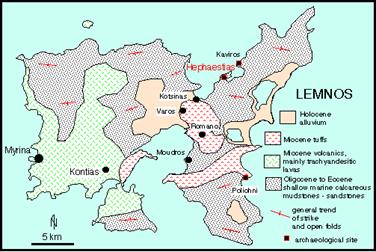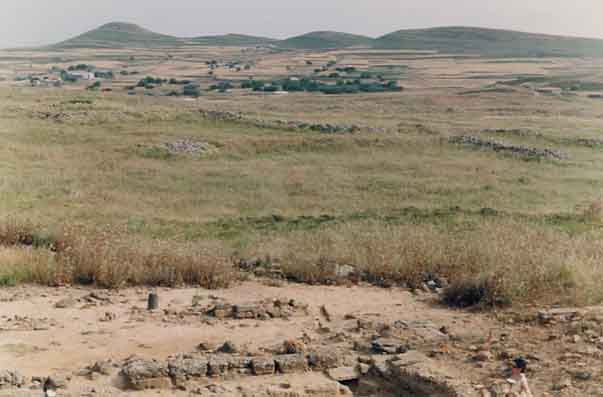Lemnian Earth
Lemnian Earth

Simplified geological map of Lemnos showing site of Hephaestias. Altered volcanic rocks near Kotsinas are the most likely source of the medicinal earth.
In the year AD 167, Galen travelled to Lemnos to establish on his own accord the medicinal usefulness of Lemnian earth and returned to Rome with twenty thousand sphragides (little stamped pellets) for his own private patients.
Our work followed the ‘footsteps’ of both Galen and the 16th century French traveller Paul Belon, with the aim of assessing classical and later literature for the Lemnian earth famed from Antiquity as a medicine, despite well established 19th century claims that it was merely a clay; our publication currently in review presents the results of geological prospection and mineralogical investigation and formulates a new working hypothesis, namely that the ‘sealed’ Lemnian earth (sphragis) was an absorbent plastic clay amenable to ‘stamping’ which also contained an active ‘medicinal’ ingredient, probably an antebacterial and astringent alum group salt of the type used in modern pharmaceutical applications.
This hypothesis can underpin future research for the nature and source of this most elusive of the earths of antiquity.

The priestess a Hephaestias performing the ritual of ‘sealing’ of the Lemnian sphragis, as observed by Galen.
by R. A. Thom (after R.H.S. Robertson 1986)

View of volcanic-like hill (on left) from Hephaestias. This could well have been the hill that Galen observed, assumed it was volcanic, and contributed to the confusion in searching for the site of the Lemnian earth worked by the priestess of Hephaestias.
Reference
Hall, A.J. and Photos-Jones, E. (in press) Accessing past beliefs and practices: the case of Lemnian Earth. accepted Aug 07 for Archaeometry.
----------------------------

